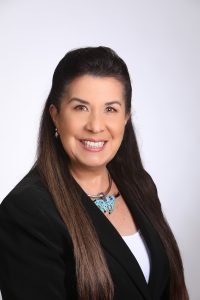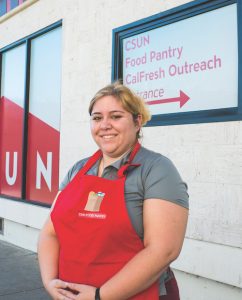Sexy Money
Foundation CFO Valerie Red-Horse Mohl is on a Mission to Change the Energy of Money

While at UCLA undergrad, Valerie Red-Horse Mohl dreamed of being a filmmaker.
But Red-Horse Mohl needed a day job, and wound up at an interview with Drexel Burnham Lambert, the firm that changed U.S. markets through the high-yield bond. “I think I learned more from that experience than I would’ve if I had gone anywhere for an MBA,” she says.
With her “College-of-Life” business degree in hand, Red-Horse Mohl went on to found the first investment bank focused on Indigenous Tribal Nations where she structured and managed over $3 billion in capital, led Social Venture Circle, which helps move investors to impact, and even made a few films along the way.
She left all that for her current role where she is on a mission to change how capital flows starting with the $1 trillion locked up in charitable foundation endowments. For her a double bottom line won’t do. She is looking for a quadfecta, where returns meet racial equity, closing the wealth gap and stemming environmental degradation.
When I tell her that is “sexy” and want to put that word in the title, Red-Horse Mohl says: “It doesn’t offend me, but my kids might be cringing to think that.”
Well kiddos, cringe away because your mom is blazing a path others need to follow.
Let’s go.
Q. It seems like a no-brainer. There are plenty of impact investing opportunities that match acceptable returns with exceptional social benefits. But charitable foundations have been slow to make it standard practice. Why is the move taking so long?
A. Well, you’re asking me a question that is my life’s work and passion.
I launched the first Native American-owned investment bank in the ‘90s and was quite happy for 20-plus years issuing bonds and some private equity in the tribal space. And I realized from a big, big picture, there was a lack of access to capital.
I did a deep dive on the wealth gap and realized that I wasn’t going to achieve what I wanted by working just with tribes. So that’s when I made the move to philanthropy and started in impact investing with a large, very long-standing impact investing nonprofit [Social Venture Circle]. And then I moved here to East Bay Community Foundation where I’m able to oversee moving all of our nearly $1 billion under management to impact with a priority on racial equity.
My passion came because I had the same realization, Daniel, that money and closing the wealth gap will address most of the issues we’re trying to solve, whether it’s affordable housing or poverty or hunger. And so, in my assessment, the problem isn’t that five or 10% endowments the philanthropic organizations make every year, the grants are fantastic.
The problem is the money invested in the market. And what I notice is that there is a fear. Charitable foundations typically don’t have registered investment managers in their employ. I’m sort of an anomaly in that.
I made that decision, and willingly took a huge pay cut to do so. So, there’s also a reason why financial professionals don’t leave Wall Street to come work for a foundation.
When you look at who controls the assets of a nonprofit foundation, even the very large ones, there is an investment committee comprised of board members or trustees. Because members of that committee might not come from the industry, “fiduciary responsibility” might seem oversized or scary. There is this corpus of money that is invested not to live but to survive for the long-term. Foundations invest the money and have an operating budget that’s often based on a percentage of that. And then they typically also hire external consultants, all the big names – Goldman Sachs or Morgan Stanley, or one of the big banks – to manage the assets and they have an autopilot menu of investing to keep their fees low.
Asset managers have a list of funds that you can invest in whether it’s mutual funds or a portfolio construction that says we’re going to put some in equities and some fixed income in. And it’s so easy to do. That’s the way they get their management fees down. And it’s just autopilot.
No criticism, but if they were to do something a little more active, they would have to charge more. So, when I came into East Bay Community Foundation with my knowledge and my licenses, I said, I’m going to create that portfolio working with our external consultants, because I actually know the asset classes. I know how to move capital with that racial equity priority.
And the answer ultimately to your question is that my hope is we can make a difference by sharing that as a model portfolio, and be able to say, here’s what we’ve done.
Q. I agree that information sharing is a critical piece in scaling impact investing across the at least $1 trillion held by U.S. foundation endowments, but how do we go faster?
A. We need to go deeper in terms of changing how we define risk in the markets.
We’ve rewritten our investment policy statement and redefined risk. So, we can look at what we call emerging managers, even though most of them are not emerging, but they’re on maybe fund one, because they’re Black or Brown or women. We look at their data and have an impact metrics firm that we’ve hired, because to really shift capital, we have to show that you’re not giving up a return when you’re impact investing. My goal has been to demonstrate that. And I have one pool of capital that is all invested for racial equity with diverse managers, and we are outperforming other pools by impressive margins.
Q. Why have foundations and other institutional investors been so slow to deploy capital to Black, Brown and female fund managers? These managers are equally as capable, and have access to new markets, that are under invested in, through their networks.
A. In moving to 100% mission alignment, we are focused on 100% racial equity investing. So that means all diverse asset managers.
And we’ve often heard people say, “we don’t know who they are. There’s not enough.” And we have dispelled that myth.
If you look at every large asset manager in the country, from Blackstone to BlackRock and all the big names, they incubated from a mothership. They have back-office support and are connected to institutional capital. So, they’re not out there on an island by themselves.
When you look at Black and Brown fund managers, most of the time they’re out there swimming on their own with no support. And that is key.
When we look at how wealth has been generated in this country, it’s mostly been corporate wealth. You can go back to Rockefeller, the first billionaire, and all the way up to Jeff Bezos and Elon Musk, it’s from corporate growth. We, in my community and the Black community, haven’t been allowed a hundred years of corporate growth.
So, when you add that to not having a mothership, it’s almost impossible. But once we get those in place and then we can scale, then that money will start to shift in a big way.
Q. I want to know more about how this all relates to your Cherokee ancestry. How important is the redeployment of private capital in making amends for the U.S.’s unforgiving treatment of First Nations and Black people?
A. I feel very much in alignment with the Black community. If you think about this country, it was built on land that was taken from my people, my ancestors, and then developed by African slaves who were forcibly brought here. That’s a big debt in my opinion.
But I think the way to make reparations is to allow us to thrive and catch up in the wealth gap that I’ve been talking about. For me, it’s not so much looking back, even though that’s important. It’s looking forward and how do we really narrow if not eliminate the wealth gap, and what happens when money comes into Black and Brown funds from Wall Street?
Many of those funds are not based in New York and Boston. It starts to then flow into companies that are all over America in communities of color. And then we raise the level of wealth in those communities and then the need for all the philanthropic support starts to lessen. There will always be a need for philanthropy, but it’s not going to answer the problem that we’re talking about.
Q. As I see it, the public sector could – by de-constraining how it funds affordable housing, homelessness and a host of other issues – draw in much more private capital, only out of the endowments, but this nation’s incredible private wealth is largely held by white men. How do we make that happen?
A. You need to stop putting band-aids on a problem that needs radical surgery.
We have to shift capital in a way that is radical. Government policy is absolutely a part of that, but when I did this deep dive on the wealth gap, guess what? Wealth equals power and voice and most of the people getting elected have wealth. If we focus on this radical surgery of shifting capital, there are government policies that can help, but not in just micro-lending and small business programs.
There are some policy shifts that can make a large difference, but I’m not sure they’re on the table because elected officials are afraid of their constituents getting uncomfortable. It’s going to be an effort that takes all of us – philanthropy, government and Wall Street. And we have to work hard on this radical surgery, and we can’t be afraid of the surgery, or we’ll just keep putting the band-aids on.
Daniel Heimpel is an award-winning journalist, philanthropy expert and educator (U.C. Berkeley, USC and UPenn). He is currently the executive editor of The Giving List, a magazine and website that connects exceptional nonprofits with high-capacity individual and institutional donors. He can be reached at dheimpel@thegivinglist.com.
